All products featured are independently chosen by us. However, SoundGuys may receive a commission on orders placed through its retail links. See our ethics statement.
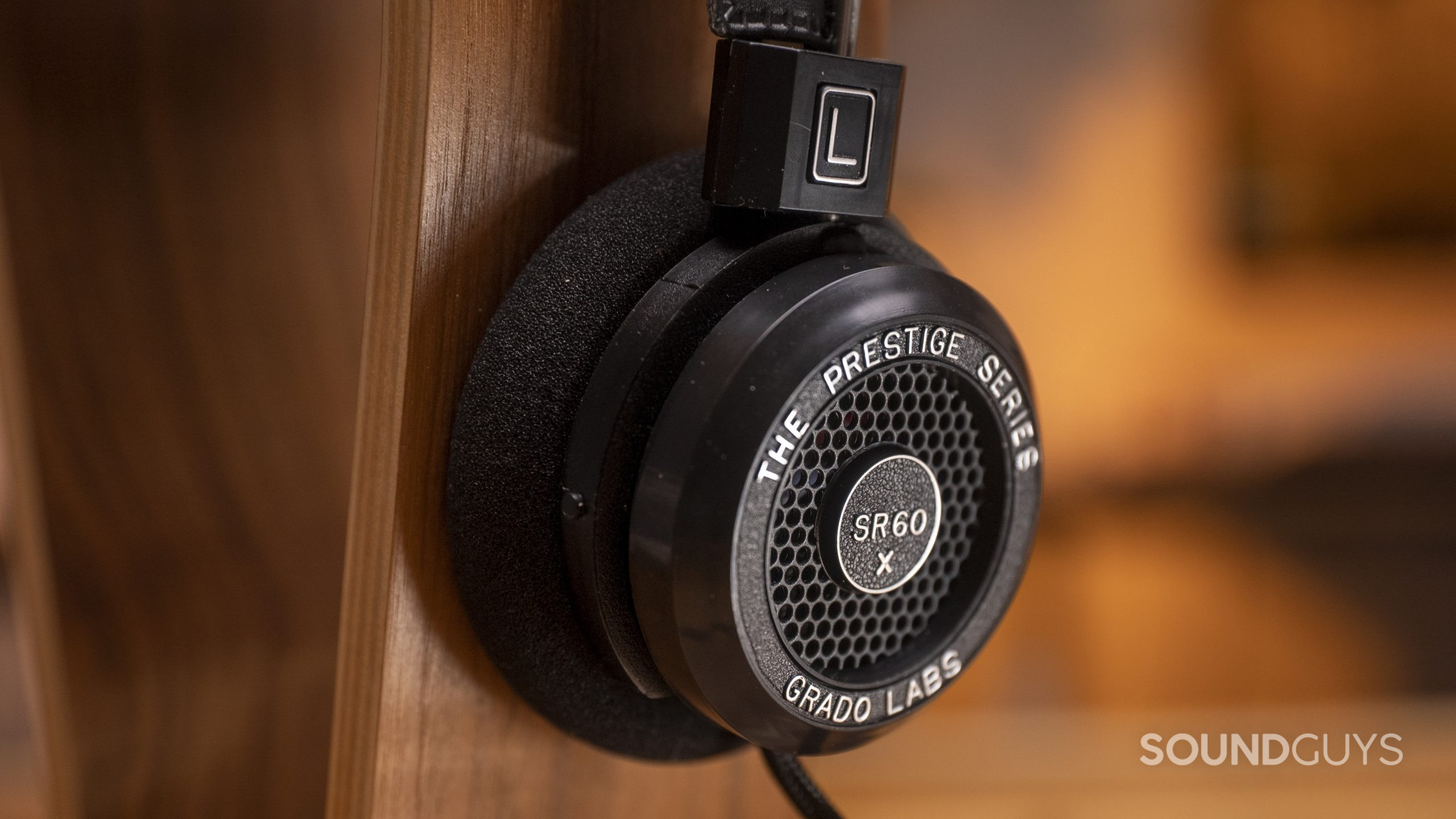
Grado Labs SR60x review
May 12, 2022
Grado SR60x
Grado Labs is a storied company, but probably not one you’ve heard of unless you’re already a headphone hobbyist. For many, Grado headphones are the gateway drug: they offer a tangible step up in audio quality over many consumer headphones at a price that isn’t back-breaking. After a week with the Grado SR60X, we found out everything you need to know about this set of open-back headphones.
The Grado SR60x offers a number of perks to those looking for a step up from mass-market headphones—just don’t take this headset on a long flight.
The SR60x is a solid option for those interested in dipping their toes into open-back headphones. This is primarily for desktop use, since the headphones don’t isolate you from your environment. It doesn’t cost too much relative to other open-backs, which is a bonus.
What’s the Grado Labs SR60x like to use?
The Grado Labs SR60x is a set of rather large open-backed on-ear headphones, that use a fabric-wrapped cable with a 3.5mm jack termination. If you’re hoping to use this with your smartphone, you’ll likely either have to use one of the few mobile devices left with a headphone jack, or you’ll have to get a dongle of some sort.

Putting the SR60x on your head, you’ll have to adjust the sliding rods to expand the band to fit your noggin. If you have a larger head, the band may not expand enough to fit well. Unlike over-ear headphones, On-ears in general need to hold onto your ears to stay in place (go figure), so more force is necessary to put on your outer ear in order to keep them there. However, Grado’s design uses really thick, light foam: meaning that force is spread out, and it uses friction instead of clamping force, at least to a point. This is probably why this design has been so well-liked over the years, as it’s far more comfortable than most on-ear headphones by a country mile.
Unlike most on-ears, the Grado Labs SR60x are open-backed, so there are a number of things to be mindful of. For example, you’ll need to take good care to prevent foreign objects from getting through the mesh and into the driver housing. If you don’t, a number of things can damage your drivers, and produce what’s lovingly referred to as “grattle.”
“Grattle” is the internet-coined term that means: “a rattling sound in Grado headphones caused by foreign objects resting on the drivers.” If you hear a rattling noise in any Grado headphones, it’s probably not the fault of your headphones, but a hair, dirt, or other pieces of detritus knocking around in there. You can use very gentle compressed air to attempt to clean these things out, but be careful: the headphone drivers are not invincible!
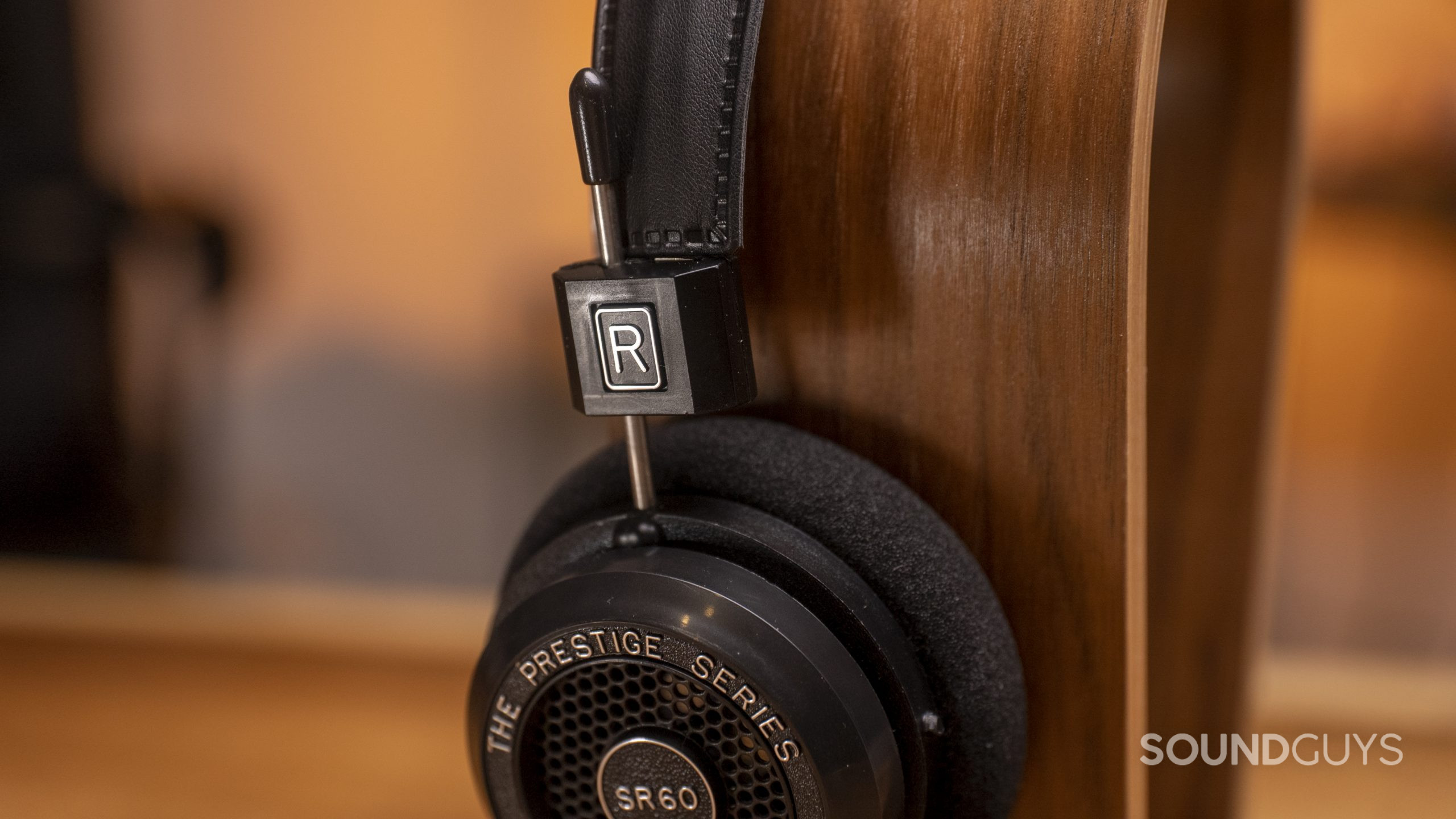
Now that smartphones generally don’t have headphone jacks, more people use Grado headphones indoors, and that’s probably a good thing. We’ll touch on it later, but no isolation means a pretty miserable experience in the presence of outside noise. Definitely keep these headphones indoors for the best results. If you do take the SR60x on the subway, bus, or another commuting method: you’ll hear everything that goes on around you. Everyone around you is going to hear what you’re listening to as well.
How do you connect the Grado Labs SR60x?
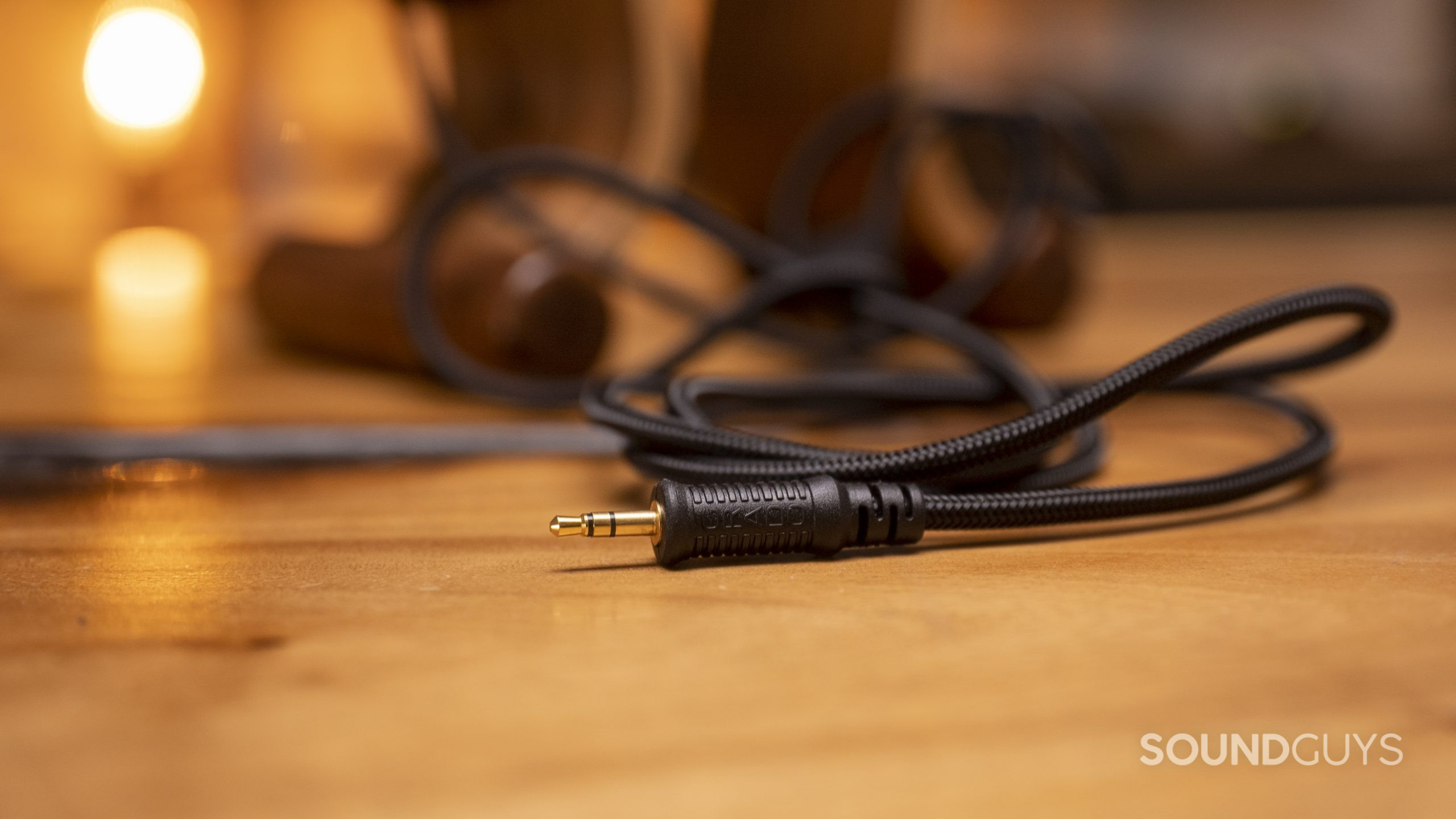
Grado headphones scratch that analog itch, as they only connect via a 3.5mm TRS connector like the headphones of old. That does mean that anyone with a phone without said connector will be out of luck unless they also buy a USB-C amp or dongle.
| Specification | |
|---|---|
Sensitivity | 99.8dB/mW |
Impedance | 38 Ohm |
No, you do not need an amp to use the Grado Labs SR60x. Because the Grado Labs SR60x has such a high sensitivity and low impedance (38Ω), an external amplifier is not necessary to use the headphones. If your source has a headphone jack, there is extremely little chance it can’t provide the power necessary for you to listen to the Grado Labs SR60x.
How well does the Grado Labs SR60x block noise?
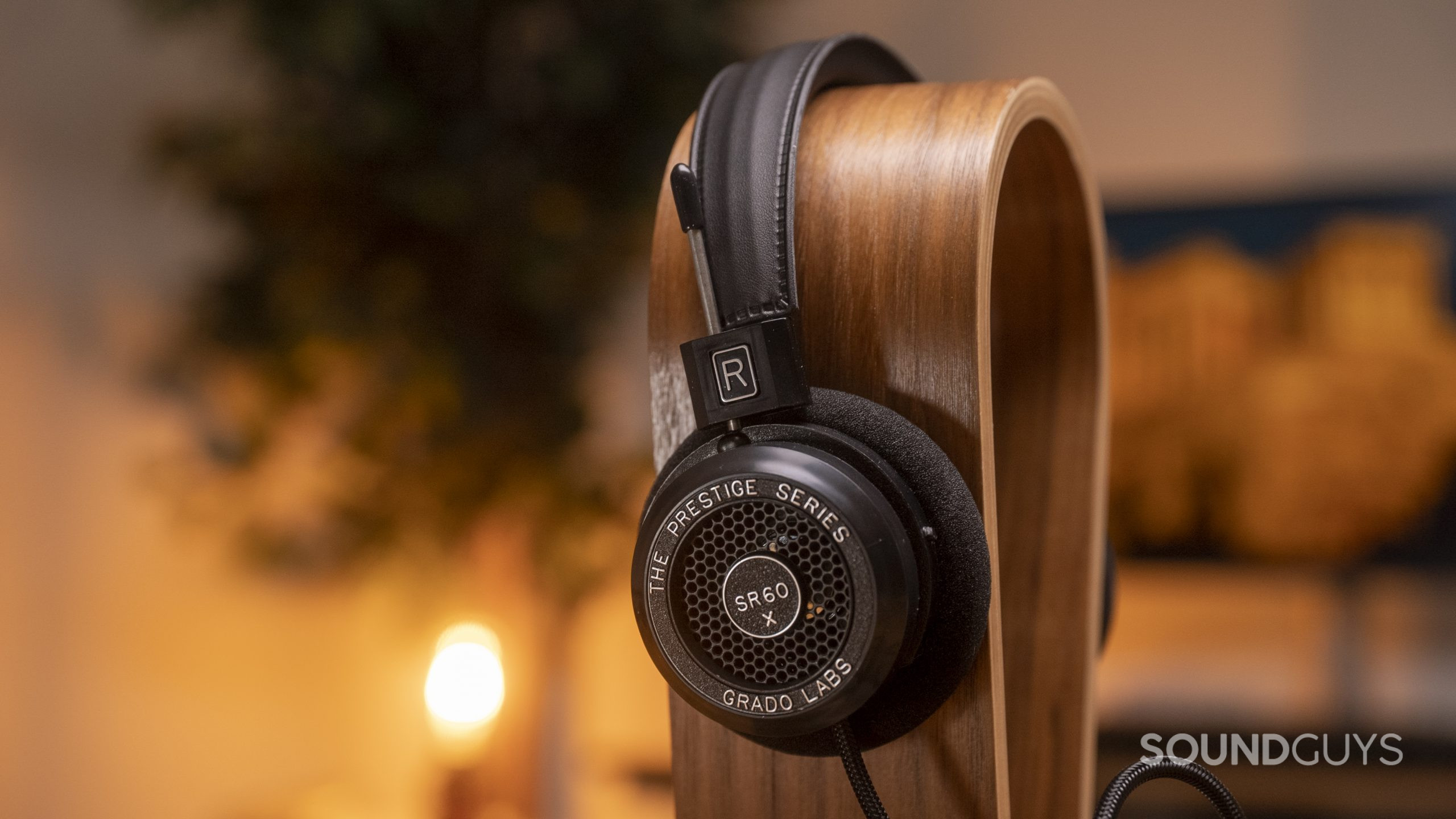
As the Grado Labs SR60x is a pair of open-back headphones, it does not attempt to block out noise at all. It’s no surprise then that our testing shows no noise attenuation below 4kHz in frequency, and higher than that it’s only cut by 25-50% in loudness. That’s not great for people looking for commuter buddies. It’s a bit unfair to knock these headphones for doing something poorly they weren’t meant to do in the first place, but we’re going to explore the subject anyway. Anyone looking to grab these headphones needs to be aware of this before spending money.
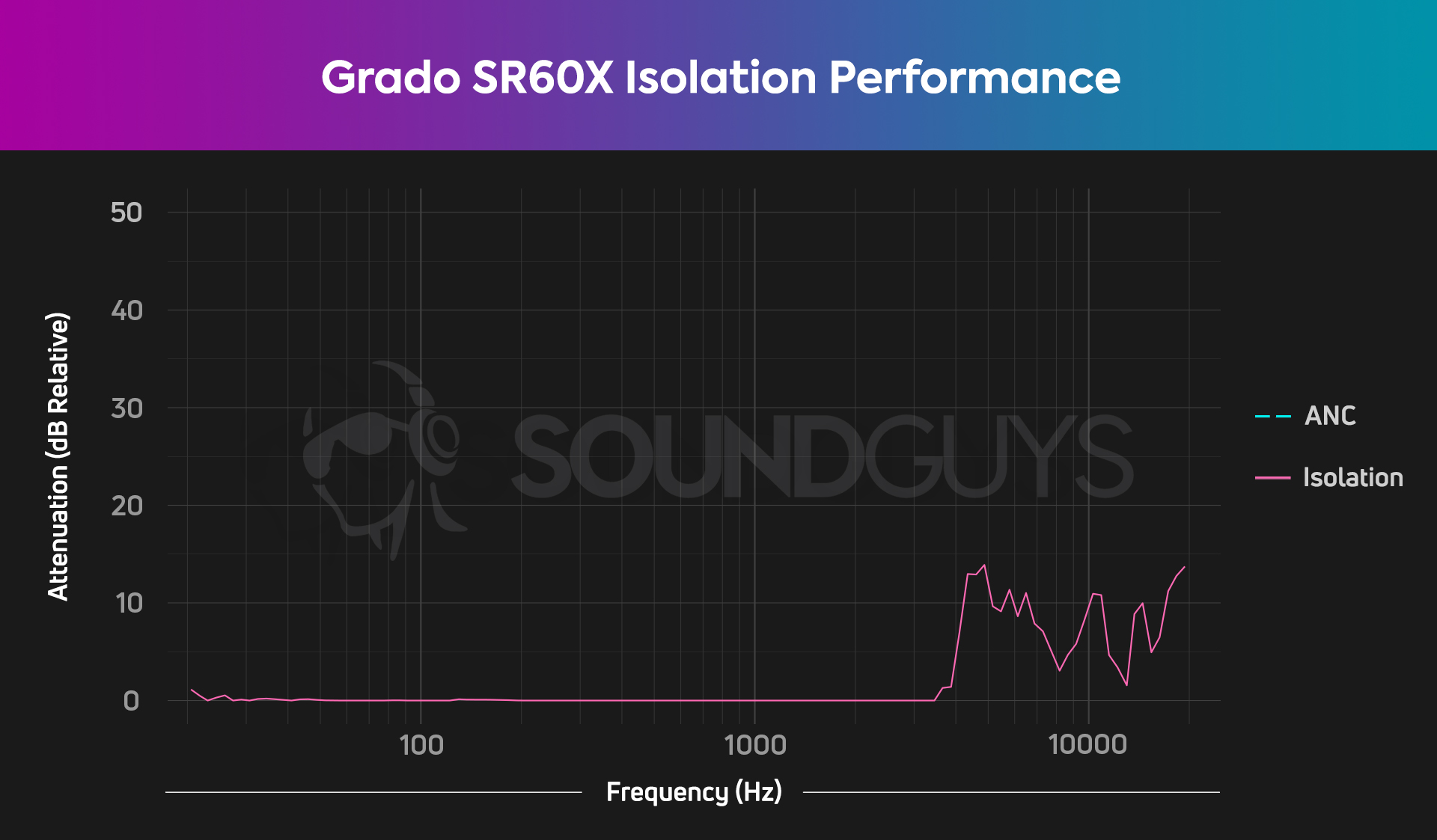
If you were to look at one of our automatically-generated charts, you’d see that these headphones let in just about everything around you unimpeded. However, that’s not the whole story. Let me show you what that chart looks like if we don’t omit values below zero.
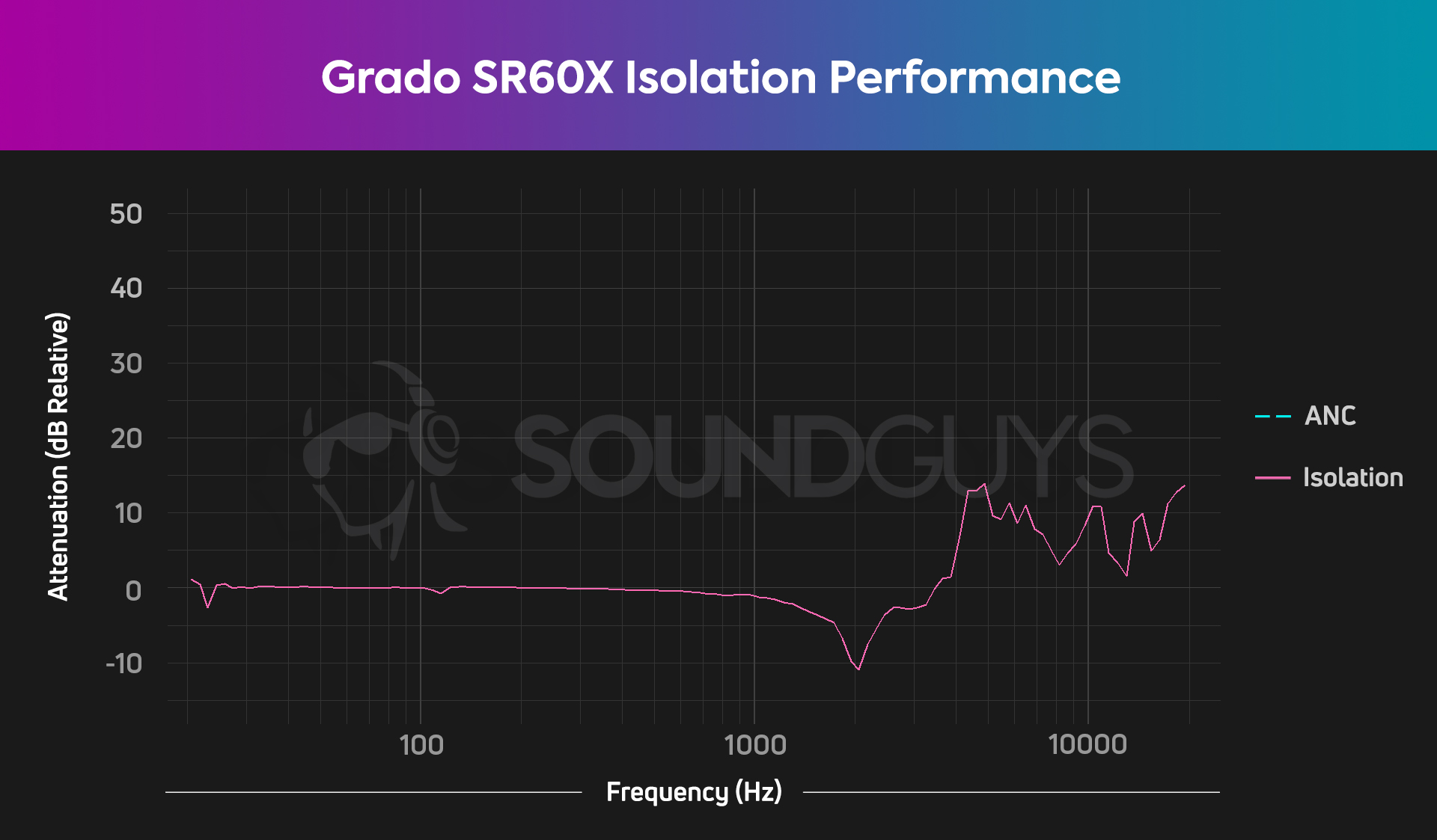
What the heck? How is negative isolation possible? Well, we believe that the design of the headphones uses what’s called an acoustic resonator as a way for Grado to boost certain frequencies. While this is a clever way to achieve the goal of getting some help at 2kHz: it does have the odd side effect of passively boosting outside noise as well in that one narrow range.
It’s unlikely that you’ll hear it on your own, and we’re not the only outlet to note this weird boost—it’s just probably not going to be something you notice right away. However, if you know what you’re listening for, you can hear it.
How does the Grado Labs SR60x sound?
Grado headphones’ characteristic sound isn’t the most popular, but it’s beloved by many. Broadly speaking, sounds from 90Hz up a little past 1kHz are right where they should be, within a couple of decibels. However, like most open-backed headphones the SR60x sub-bass response is very under-represented compared to what many listeners are used to. This is likely targeting something close to our “studio” target curve, shown in pink below.
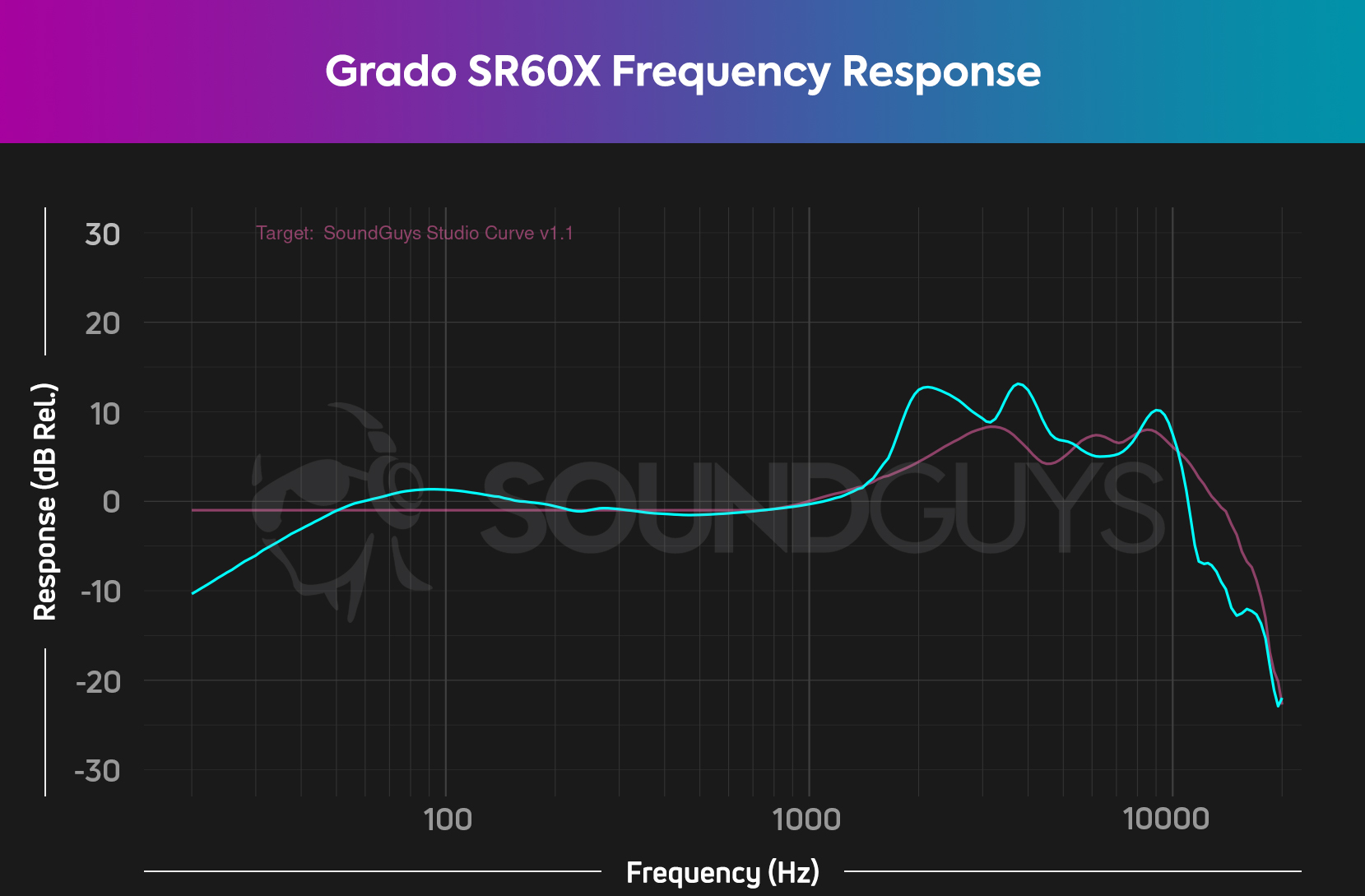
At 2kHz, 4kHz, and 9kHz, significant peaks are present in the frequency response that will boost sounds like string plucks and strums, certain cymbal shimmers, and hi-hats. Not all of these sounds will sound boosted, but many of them will. This is a pretty good way to get certain instruments that get lost in a mix to stand out, but ideally it happens during the production stage of a song, not with your headphones! Generally speaking, these kinds of narrow, pronounced peaks in a frequency response are undesirable, since any swings in emphasis can have weird effects on your music. It’s not extremely noticeable all the time, but it’s not for everyone.
Like most other open-backed headphones, sub-bass rolls off below 90Hz, and bass never exceeds our target curve. That’s fine if you’re not looking to rattle your skull, and there is a significant proportion of people out there who do like less bass overall. Just be aware that if you’re a bass head into Run the Jewels or 808-heavy songs: you may want more.
Should you buy the Grado Labs SR60x?

The Grado SR60x is best suited for listeners who like the on-ear design, but need a set of cans that stay by the computer. Many may take these out into the world with them, but a number of drawbacks make that a bit unwise.
It’s a bit difficult to tell right away whether or not you’ll like the Grado SR60x based on reviews alone. Sound is the most important part of any buying decision when you’re looking for wired, feature-light headphones. We recommend trying out the SR60x first if you can, because it’ll almost certainly sound very different than you’re expecting. That is, of course, unless you already own Grado headphones and like them. If this is the case, you’ll most likely be a fan of the SR60x.

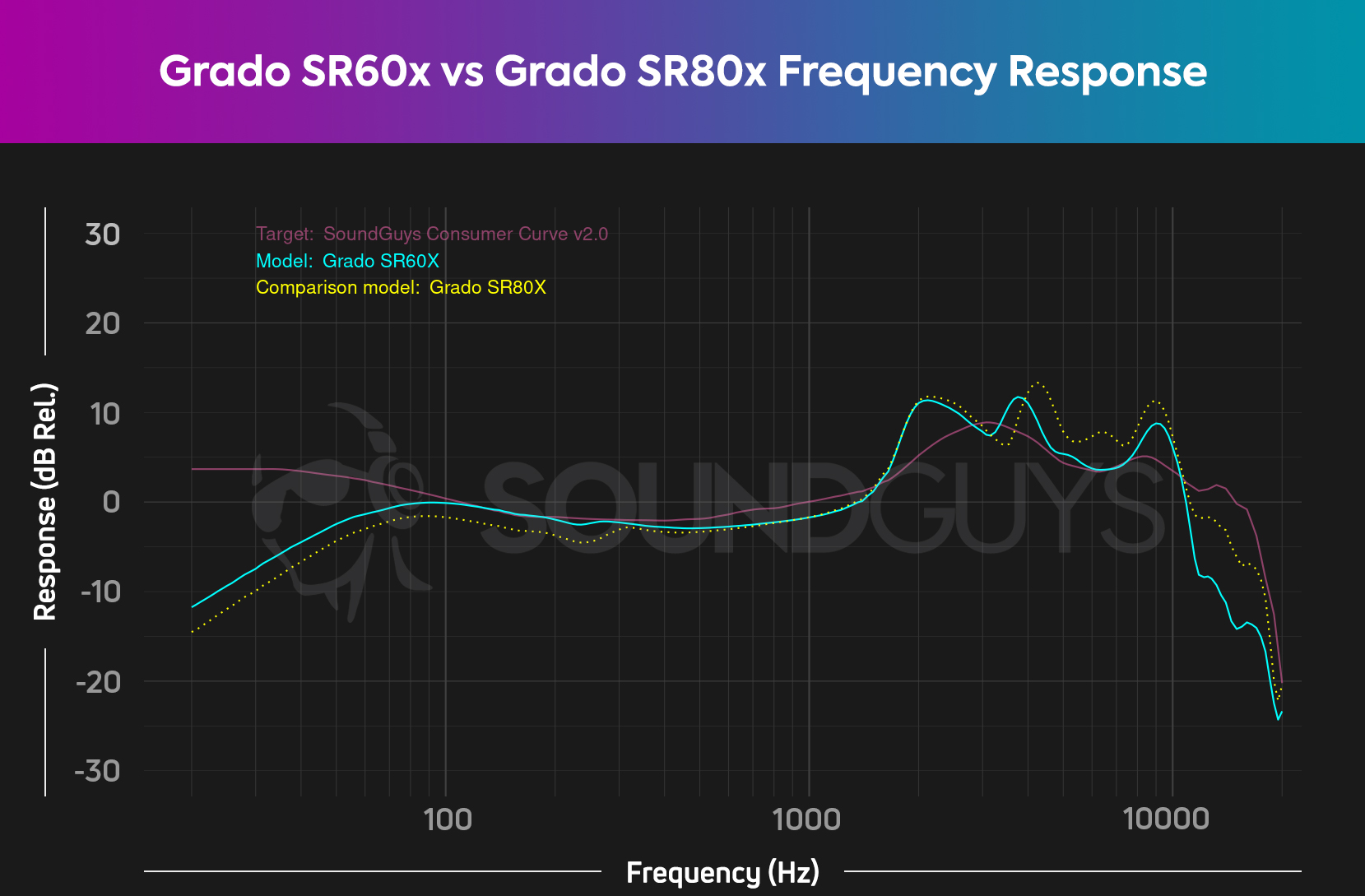
The Grado SR80x is virtually identical to the SR60x but the higher model number costs $25 USD more, and both headsets have the same isolation quirk. You’ll see that the treble response is a bit louder with the SR80x than it is with the SR60x, but you generally get the same sound from either headset. If you want slightly better channel balance, go with the SR80x.
Frequently asked questions about the Grado SR60x
No! A standalone DAC isn’t strictly necessary to enjoy the Grado SR60x.
Thank you for being part of our community. Read our Comment Policy before posting.